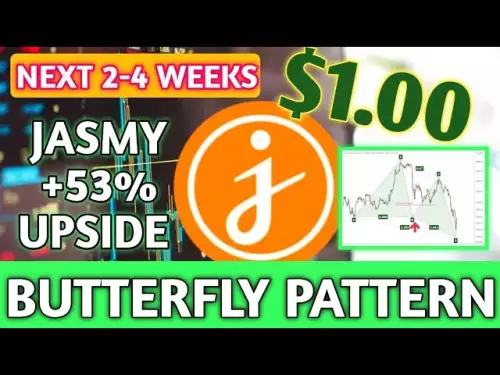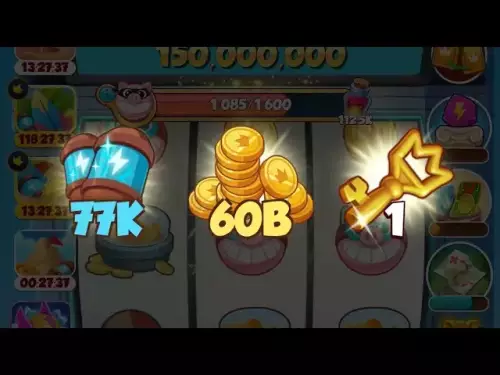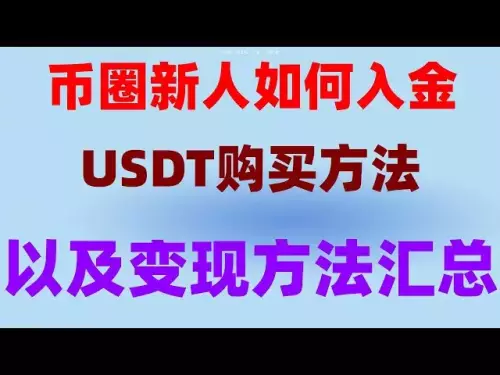-
 Bitcoin
Bitcoin $110200
-2.61% -
 Ethereum
Ethereum $4377
-8.92% -
 XRP
XRP $2.859
-6.00% -
 Tether USDt
Tether USDt $1.000
0.02% -
 BNB
BNB $840.3
-3.99% -
 Solana
Solana $188.1
-8.36% -
 USDC
USDC $0.9999
0.00% -
 TRON
TRON $0.3439
-5.24% -
 Dogecoin
Dogecoin $0.2085
-11.07% -
 Cardano
Cardano $0.8400
-9.29% -
 Chainlink
Chainlink $23.26
-11.27% -
 Hyperliquid
Hyperliquid $43.02
-6.59% -
 Ethena USDe
Ethena USDe $1.001
0.04% -
 Stellar
Stellar $0.3813
-7.26% -
 Sui
Sui $3.336
-10.37% -
 Bitcoin Cash
Bitcoin Cash $540.5
-8.39% -
 Avalanche
Avalanche $23.27
-9.85% -
 Hedera
Hedera $0.2288
-8.60% -
 UNUS SED LEO
UNUS SED LEO $9.572
-0.27% -
 Litecoin
Litecoin $107.8
-9.51% -
 Toncoin
Toncoin $3.115
-6.08% -
 Shiba Inu
Shiba Inu $0.00001195
-8.58% -
 Uniswap
Uniswap $9.635
-12.77% -
 Polkadot
Polkadot $3.733
-10.02% -
 Dai
Dai $1.000
0.01% -
 Cronos
Cronos $0.1550
-2.42% -
 Bitget Token
Bitget Token $4.483
-3.99% -
 Monero
Monero $265.7
-3.26% -
 Aave
Aave $312.1
-10.94% -
 Ethena
Ethena $0.6255
-10.84%
How to identify the strength of a trend using moving averages in crypto?
Moving averages like the 50 and 200 EMA help crypto traders identify trend direction and strength, with crossovers signaling potential reversals.
Aug 06, 2025 at 02:28 pm
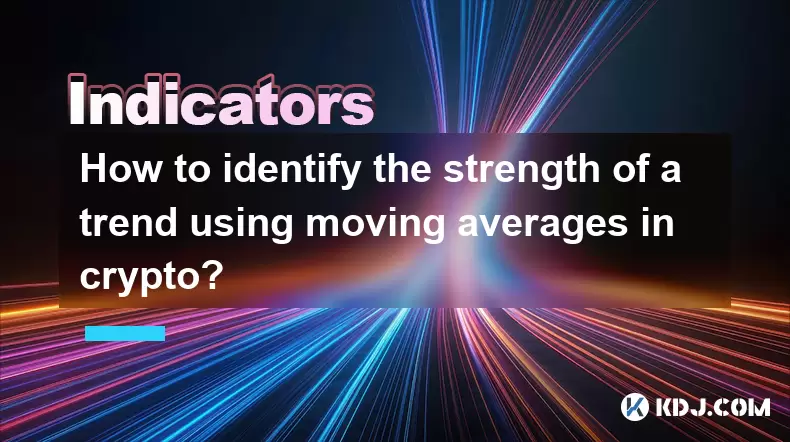
Understanding Moving Averages in Cryptocurrency Trading
Moving averages are foundational tools in technical analysis, widely used by cryptocurrency traders to smooth out price data and identify the direction of a trend. They calculate the average price of an asset over a specific time period, which helps eliminate short-term volatility. The two most common types are the Simple Moving Average (SMA) and the Exponential Moving Average (EMA). While the SMA gives equal weight to all data points, the EMA places more emphasis on recent prices, making it more responsive to new information. In the fast-moving crypto markets, where price swings can be extreme, using the right type of moving average is crucial for accurate trend analysis.
Using Multiple Moving Averages to Confirm Trend Direction
Traders often apply multiple moving averages with different timeframes to assess trend strength. A common setup involves plotting the 50-period EMA and the 200-period EMA on a price chart. When the shorter-term average (50 EMA) is above the longer-term average (200 EMA), it signals a bullish trend. Conversely, when the 50 EMA is below the 200 EMA, the trend is bearish. The wider the separation between these two lines, the stronger the trend. This phenomenon is known as the "moving average ribbon" and is especially useful in identifying sustained momentum in assets like Bitcoin or Ethereum.
- Apply both the 50 EMA and 200 EMA to your trading chart using platforms like TradingView or Binance.
- Observe the spatial relationship between the two lines.
- Look for consistent divergence where the 50 EMA remains above or below the 200 EMA.
- Confirm that price action stays above the 50 EMA in uptrends or below it in downtrends.
This multi-layered approach reduces false signals and increases confidence in trend identification.
Assessing Trend Strength Through Slope and Angle
The visual slope of a moving average line provides insight into trend strength. A steeply rising EMA or SMA suggests strong upward momentum, while a flat or gently sloping line indicates a weak or consolidating trend. In cryptocurrency, where volatility is high, a sharply angled moving average often coincides with parabolic price moves driven by market sentiment or news events. Traders should monitor the angle over time, as a flattening slope may signal weakening momentum, even if the price remains above the average.
- Zoom in on the moving average line’s trajectory over the past 20 to 30 candles.
- Compare the current angle to previous periods of known strength or weakness.
- Use a trendline tool to measure the degree of incline or decline.
- Cross-verify with volume indicators to ensure the slope is supported by trading activity.
A consistently steep slope with increasing volume reinforces the legitimacy of a strong trend.
Leveraging Crossovers to Identify Trend Changes
Moving average crossovers are key signals for trend shifts. A golden cross occurs when the 50 EMA crosses above the 200 EMA, suggesting the start of a bullish trend. A death cross, where the 50 EMA falls below the 200 EMA, indicates a bearish reversal. However, not all crossovers indicate strong trends. The strength of the resulting trend depends on the context, such as the distance between the averages before the crossover and the volume during the move.
- Wait for the crossover to complete, ensuring the shorter MA fully crosses and closes beyond the longer MA.
- Check for confirmation on higher timeframes, such as the 4-hour or daily chart, to avoid noise.
- Analyze the candlestick patterns around the crossover for additional validation.
- Monitor post-crossover price action: strong follow-through suggests trend strength; sideways movement indicates weakness.
These steps help filter out false signals common in low-liquidity altcoins.
Combining Moving Averages with Other Indicators
To enhance accuracy, traders combine moving averages with complementary tools. The Average Directional Index (ADX) is particularly effective for measuring trend strength. An ADX value above 25 typically indicates a strong trend, while values below 20 suggest a ranging market. When the ADX rises concurrently with a widening gap between moving averages, it confirms a robust trend. Similarly, the MACD (Moving Average Convergence Divergence) can validate momentum. A MACD line above zero and increasing histogram bars align with a strong bullish trend confirmed by moving averages.
- Add the ADX indicator to your chart and set the period to 14.
- Observe whether the ADX line is rising and exceeds 25.
- Simultaneously check if the price is moving decisively away from the moving average band.
- Use volume profile to ensure participation supports the trend.
This multi-indicator approach minimizes reliance on a single signal and increases reliability in volatile crypto markets.
Practical Example: Analyzing Bitcoin’s Trend in 2023
In early 2023, Bitcoin exhibited a clear uptrend confirmed by moving averages. The 50 EMA rose above the 200 EMA in January, forming a golden cross. Over the next two months, the gap between the two averages widened significantly, and the slope of the 50 EMA became steep. The ADX climbed above 30, confirming strong directional movement. Price consistently held above the 50 EMA, with only minor pullbacks. This confluence of factors indicated a powerful bullish trend, allowing traders to maintain long positions with confidence.
- The golden cross occurred after a prolonged consolidation below $20,000.
- Post-crossover, each pullback saw buyers stepping in near the 50 EMA.
- Volume increased on up-candles, supporting the trend’s legitimacy.
- The 200 EMA acted as dynamic support during minor corrections.
Such real-world examples demonstrate how moving averages, when used systematically, provide actionable insights.
Frequently Asked Questions
Can moving averages predict trend reversals in cryptocurrency?
Moving averages do not predict reversals but help identify them after they occur. A crossover or break below a key average, such as the 200 EMA, signals a potential reversal. However, due to lag, these signals appear after the price has already moved. Traders use them in conjunction with momentum oscillators like RSI to anticipate turning points.
Which moving average period is best for day trading crypto?
For day trading, shorter periods like the 9 EMA or 20 EMA are preferred. These react quickly to price changes and help identify intraday trends. Combining the 9 and 20 EMAs on a 15-minute or 1-hour chart allows traders to spot entries during strong momentum phases.
Why do moving averages work better in trending markets than in sideways markets?
In sideways or choppy markets, prices oscillate around the moving average, generating frequent false crossovers. Moving averages perform best when price exhibits clear directional movement, allowing the average to act as dynamic support or resistance. During consolidation, traders often switch to range-bound strategies.
Is the 200-day moving average relevant for crypto given its 24/7 trading?
Yes, the 200-day moving average remains a key benchmark. Despite crypto’s round-the-clock trading, the 200-day MA is widely watched by institutional and retail traders alike. It often acts as a long-term support or resistance level, especially for major assets like BTC and ETH.
Disclaimer:info@kdj.com
The information provided is not trading advice. kdj.com does not assume any responsibility for any investments made based on the information provided in this article. Cryptocurrencies are highly volatile and it is highly recommended that you invest with caution after thorough research!
If you believe that the content used on this website infringes your copyright, please contact us immediately (info@kdj.com) and we will delete it promptly.
- Bitcoin Price, Cardano, Layer Brett: What's the Haps?
- 2025-08-26 05:30:13
- Stablecoins, DeFi, and Financial Autonomy: Navigating the Decentralized Revolution
- 2025-08-26 05:05:13
- Mavryk's $MVRK Token: Paving the Way for Real-World Asset Tokenization
- 2025-08-26 03:10:13
- Arctic Pablo Coin: The Meme Coin Presale Poised to Redefine Crypto in 2025?
- 2025-08-26 03:25:13
- ICP Trading Tumbles, PI Plummets, But BlockDAG Sales Soar: A Crypto Contrast in 2024
- 2025-08-26 01:25:13
- Bitcoin, XRP, and Strategy: Navigating the Crypto Landscape Like a New Yorker
- 2025-08-26 01:25:13
Related knowledge
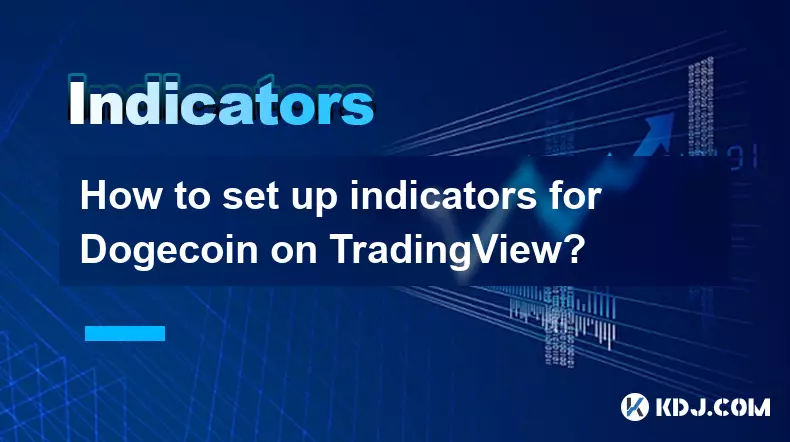
How to set up indicators for Dogecoin on TradingView?
Aug 25,2025 at 04:23pm
Understanding Dogecoin and TradingView1. Dogecoin, initially created as a meme-based cryptocurrency, has evolved into a widely traded digital asset. I...

What does it mean when the +DI and -DI cross frequently in the DMI indicator but the ADX is flattening?
Aug 11,2025 at 03:15am
Understanding the DMI Indicator ComponentsThe Directional Movement Index (DMI) is a technical analysis tool composed of three lines: the +DI (Positive...

What does the sudden appearance of a "dark cloud cover" candlestick pattern during an uptrend indicate?
Aug 13,2025 at 11:35am
Understanding the 'Dark Cloud Cover' Candlestick PatternThe dark cloud cover is a bearish reversal pattern in technical analysis that typically appear...

What does it mean when the moving average, MACD, and RSI all send buy signals simultaneously?
Aug 11,2025 at 01:42pm
Understanding the Convergence of Technical IndicatorsWhen the moving average, MACD, and RSI all generate buy signals at the same time, traders interpr...

What does it mean when both the KDJ indicator and the RSI show overbought signals simultaneously?
Aug 13,2025 at 11:35am
Understanding the KDJ Indicator in Cryptocurrency TradingThe KDJ indicator is a momentum oscillator derived from the Stochastic Oscillator, widely use...

What does it mean when the price is trading above the SAR indicator but the red dots are densely packed?
Aug 09,2025 at 11:49pm
Understanding the SAR Indicator and Its Visual SignalsThe SAR (Parabolic Stop and Reverse) indicator is a technical analysis tool used primarily to de...

How to set up indicators for Dogecoin on TradingView?
Aug 25,2025 at 04:23pm
Understanding Dogecoin and TradingView1. Dogecoin, initially created as a meme-based cryptocurrency, has evolved into a widely traded digital asset. I...

What does it mean when the +DI and -DI cross frequently in the DMI indicator but the ADX is flattening?
Aug 11,2025 at 03:15am
Understanding the DMI Indicator ComponentsThe Directional Movement Index (DMI) is a technical analysis tool composed of three lines: the +DI (Positive...

What does the sudden appearance of a "dark cloud cover" candlestick pattern during an uptrend indicate?
Aug 13,2025 at 11:35am
Understanding the 'Dark Cloud Cover' Candlestick PatternThe dark cloud cover is a bearish reversal pattern in technical analysis that typically appear...

What does it mean when the moving average, MACD, and RSI all send buy signals simultaneously?
Aug 11,2025 at 01:42pm
Understanding the Convergence of Technical IndicatorsWhen the moving average, MACD, and RSI all generate buy signals at the same time, traders interpr...

What does it mean when both the KDJ indicator and the RSI show overbought signals simultaneously?
Aug 13,2025 at 11:35am
Understanding the KDJ Indicator in Cryptocurrency TradingThe KDJ indicator is a momentum oscillator derived from the Stochastic Oscillator, widely use...

What does it mean when the price is trading above the SAR indicator but the red dots are densely packed?
Aug 09,2025 at 11:49pm
Understanding the SAR Indicator and Its Visual SignalsThe SAR (Parabolic Stop and Reverse) indicator is a technical analysis tool used primarily to de...
See all articles





















